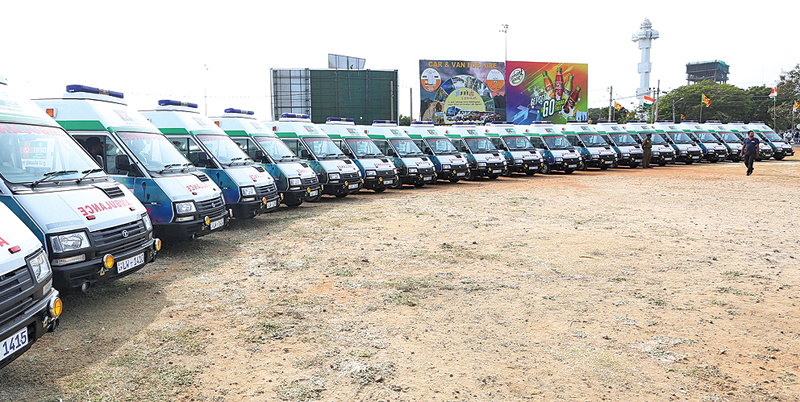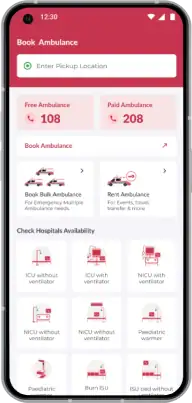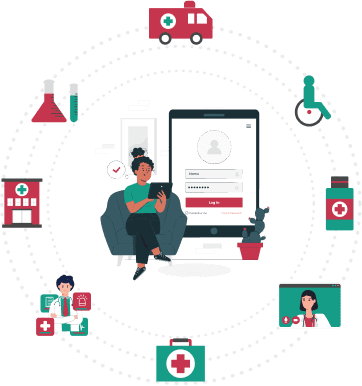In a country as vast and diverse as India, efficient healthcare services are crucial to ensuring the well-being of its citizens. One of the most critical components of healthcare is the ambulance service, which plays a pivotal role in saving lives during emergencies. However, India faces significant challenges when it comes to ambulance delays, resulting in potentially serious consequences for patients. This article explores the common causes of ambulance delays in India and suggests potential solutions to address this pressing issue.
Lack of Staff and Resource Constraints
One of the primary reasons for ambulance delays in India is the chronic issue of understaffing and resource constraints. Many regions across the country struggle with a shortage of trained medical personnel, paramedics and drivers. This shortage often leads to delays in dispatching ambulances to emergency situations. Additionally, inadequate funding and budget allocations for ambulance services hinder the availability of essential resources, such as vehicles and medical equipment.
Poor Road Infrastructure
In many parts of India, especially rural and remote areas, the lack of proper infrastructure poses a significant challenge for timely ambulance services. Poorly maintained roads, inadequate transportation networks and absence of designated ambulance lanes contribute to delays in reaching patients. During monsoon seasons, flooded roads and waterlogged areas can further impede ambulance movement.
Traffic Congestion and Urban Challenges
India's increasing urban population has led to increased traffic congestion in cities, making it difficult for ambulances to navigate through crowded streets. Traffic jams and roadblocks due to accidents or construction work can cause significant delays in reaching emergency scenes. Moreover, the lack of awareness among the public about giving way to emergency vehicles exacerbates the problem.
Communication Gaps and Technology Shortcomings
Efficient communication is paramount in ensuring timely ambulance services. However, communication gaps between emergency helpline centers, ambulance drivers and medical facilities hinder the coordination needed for quick response. Outdated communication systems, lack of real-time tracking and inadequate use of technology contribute to delays in ambulance dispatch and patient transfer.
Cultural and Social Factors
Certain cultural and social factors also play a role in ambulance delays. In some cases, families may delay calling for an ambulance due to superstitions, fear of hospital costs or a preference for traditional remedies. Such delays can exacerbate patients' conditions and reduce the effectiveness of medical interventions upon arrival.
Overcoming Ambulance Delays: Potential Solutions
To address the common causes of ambulance delays in India, several potential solutions can be considered:
Increased Funding and Resources: Governments and healthcare authorities should allocate sufficient funds to improve ambulance services. This includes hiring and training more medical personnel, maintaining a fleet of well-equipped ambulances and ensuring an adequate supply of medical essentials.
Enhanced Infrastructure Development: Investment in road and transportation infrastructure is crucial for efficient ambulance services. Designating ambulance lanes, maintaining roads and implementing technology-driven navigation systems can significantly reduce travel times during emergencies.
Advanced Communication Systems: Implementation of modern communication technologies, such as GPS tracking, ambulance booking app and two-way radios, can streamline communication between emergency response centers, ambulances and healthcare facilities. Real-time updates and accurate information can expedite ambulance dispatch.
Community Awareness and Education: Public awareness campaigns should emphasize the importance of timely ambulance calls and yielding the right of way to emergency vehicles. Addressing cultural beliefs and misconceptions can encourage families to seek medical assistance promptly.
Collaboration with Private Sector: Partnering with private ambulance services and incorporating them into the public healthcare system can augment the availability of ambulances, especially in densely populated urban areas.
Telemedicine and First Aid Training: Providing telemedicine support to assess the severity of emergencies remotely and offering basic first aid training to communities can help stabilize patients until ambulances arrive.
Conclusion
Ambulance delays in India pose a significant challenge to effective healthcare delivery, impacting patient outcomes during critical situations. Addressing the common causes of these delays requires a comprehensive approach that involves improved funding, infrastructure development, technology integration, community education and collaboration between public and private sectors. By prioritizing these solutions, India can work towards a healthcare system where ambulance delays are minimized and every citizen has timely access to life-saving medical assistance.






